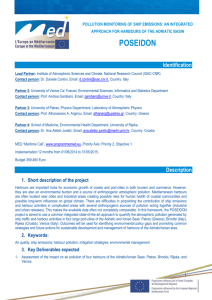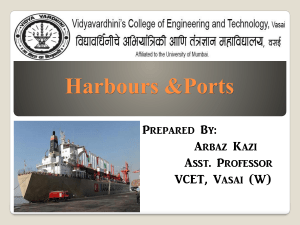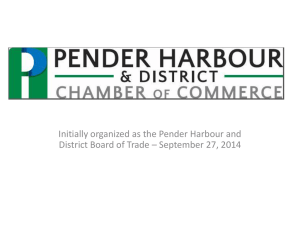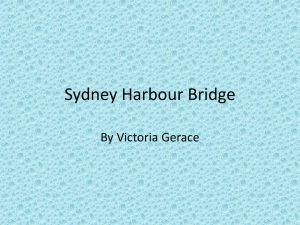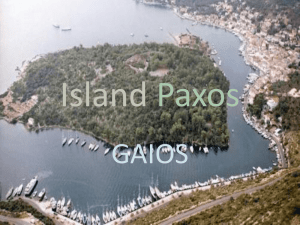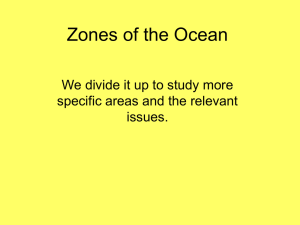Harbours - Er.R.YUVARAJA
advertisement
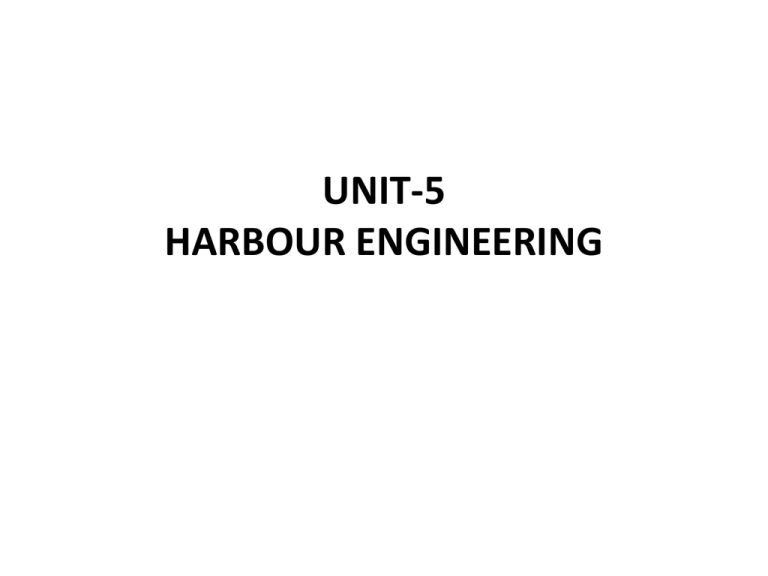
UNIT-5 HARBOUR ENGINEERING Water transportation • The water transportation can further be subdivided into two categories: • Inland transportation and • Ocean transportation. • Inland Water transportation is either in the form of river transportation or canal transportation. • Ocean Water transportation is adopted for trade and commerce. • It is estimated that about 75 per cent of international trade is carried out by shipping. • The development of navy force is intended for national defense. • Ocean water transportation has an limitation and it possesses high flexibility. Harbours: • A harbour can be defined as a sheltered area of the sea in which vessels could be launched, built or taken for repair; or could seek refuge in time of storm; or provide for loading and unloading of cargo and passengers. • • • • Harbours are broadly classified as: Natural harbours Semi-natural harbours Artificial harbours. Natural harbours • Natural formations affording safe discharge facilities for ships on sea coasts, in the form of creeks and basins, are called natural harbours. • With the rapid development of navies engaged either in commerce or war, improved accommodation and facilities for repairs, storage of cargo and connected amenities had to be provided in natural harbours. • The size and draft of present day vessels have necessitated the works improvement for natural harbours. • The factors such as local geographical features, growth of population, development of the area, etc. have made the natural harbours big and attractive. Bombay and Kandla are, examples of natural harbours • Semi-natural harbours • This type of harbour is protected on sides by headlands protection and it requires manmade protection only at the entrance. • Vishakhapatnam is a semi-natural harbour. Artificial harbours • Where such natural facilities are not available, countries having a seaboard had to create or construct such shelters making use of engineering skill and methods, and such harbours are called artificial or man-made harbours. • Madras is an artificial harbour. • Thus, a naval vessel could obtain shelter during bad weather within a tract or area of water close to the shore, providing a good hold for anchoring, protected by natural or artificial harbour walls against the fury of storms. From their utility and situation, harbours are further classified into three major types • • • • Harbours of refuge including naval bases Commercial harbours, connected with ports Fishery harbours. It is necessary to study the requirements of these types of harbours and provide for such requirements. Requirements of harbour of refuge: • Ready accessibility • Safe and commodious anchorage • Facilities for obtaining supplies and repairs Requirements of commercial harbour • Spacious accommodation for the mercantile marine. • Ample quay space and facilities for transporting; loading and unloading cargo. • Storage sheds for cargo. • Good and quick repair facilities to avoid delay. Accessibility and size of harbours • The harbour entrance should be designed and located for quick easy negotiation by ships, overtaken by storms. • At the same time, it should be narrow enough not to expose the harbour to the effects of the stormy sea. • Maximum dimensions upto 180 have been adopted • The entrance is generally placed of the sea, with a passage to the interior of the harbour so arranged as to minimize the effect of rough seas. • Thus; the size is determined by: • Accommodation required. • Convenience for maneuvering and navigation. • Adaptability to natural features. Dock (maritime), an area of water for building or repairing or loading and unloading ships or ferries A port is a facility for receiving ships and transferring cargo. A quay, pronounced 'kay', 'key' or 'kway', is a wharf or bank where ships and other vessels are loaded. A harbor or harbour or haven, is a place where ships may shelter from the weather or are stored. A jetty is a structure, such as a pier, that projects into a body of water to influence the current or tide or to protect a harbor or shoreline from storms or erosion. A wharf is a fixed platform, commonly on pilings, where ships are loaded and unloaded. LITTORAL DRIFT • Longshore drift consists of the transportation of sediments(clay, silt, sand and shingle) along a coast at an angle to the shoreline, which is dependent on prevailing wind direction, swash and backwash. • This process occurs in the littoral zone, and in or close to the surf zone. The process is also known as longshore transport or littoral drift. Dry dock & wet dock • a large dock from which water can be pumped out; used for building ships or for repairing a ship below its waterline [ dry dock, dry dock, graving dock] • a dock where the water is shut in, and kept at a given level, to facilitate the loading and unloading of ships; -- also sometimes used as a place of safety; a basin. Breakwaters • Breakwaters are structures constructed on coasts as part of coastal defense or to protect an anchorage from the effects of both weather and longshore drift. Breakwaters Buoys

